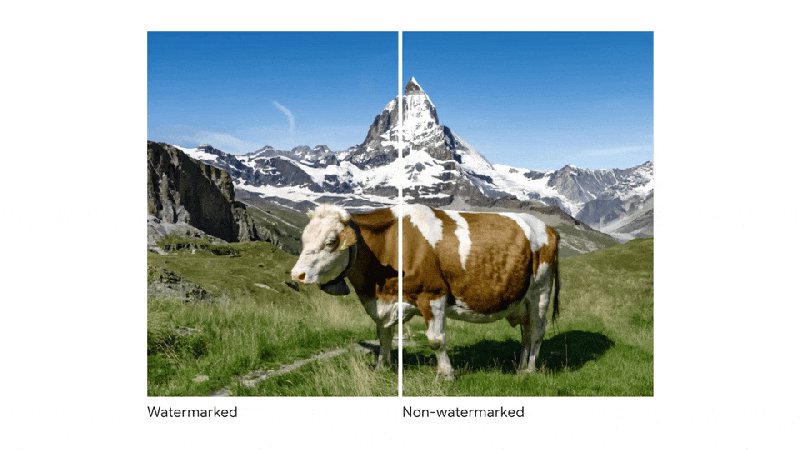Google’s DeepMind says it has cracked a problem that has vexed those trying to verify whether images are real or created by AI. Researchers proclaimed their new watermarking SynthID format can be used to pinpoint AI-generated deepfakes without distorting the image’s original quality. The catch is that the program currently only works with Google’s native image generation systems.
In a blog post, DeepMind said the beta SynthID system embeds a watermark inside the pixels of AI-produced images, which means that while a human eye can’t spot the difference, a detection tool can spot these tell-tale identifiers and be able to say an image was created with AI. SynthID is available for companies using Google’s Vertex AI platform, meaning it’s only available for Google’s big enterprise partners using the company’s own Imagen model.

Google’s DeepMind division—which recently combined with Google’s Brain AI team—isn’t saying exactly how this watermarking works. Researchers said that SynthID will keep the watermark even after it is resized, compressed, or modified with color filters. Otherwise, the secret sauce is being kept secret, likely to prevent outsiders from finding a way around it. DeepMind CEO Demis Hassabis told The Verge that eventually the company would want to share it with “partners” if the system proves effective.
However, this also means the watermarks exist in a closed loop within the Google ecosystem. The system can also scan images to assess the likelihood it was created by Imagen, but knowing just how many AI image generators are out there, it’s hard to tell how useful that feature can be.
Watermarks Can’t Stop Misinformation from Spreading
The Biden administration has stressed the need for companies to come up with a means for identifying AI images. The thing is, watermarks won’t save us from the issues of AI-generated deepfakes and misinformation.
Researchers have noted that most AI detection software simply doesn’t do the job it needs to, especially when so many companies are trying to market their own proprietary AI platforms. UC Berkley computer science professor Hany Farid told Scientific American this month that watermarking is simply a “mitigation strategy” against the harms of AI deepfakes.
Gizmodo has talked at length with other engineers who have tried to create methods for immunising images against AI manipulation, but critics pointed out there is no foolproof method. Every time one creator comes up with a means of protecting images from distortion, or for marking images created by AI, somebody else can come along and find a way around it.
And watermarking is especially an issue. As AI researcher Claire Leibowicz examined in a recent piece published by MIT Technology Review, watermarking will only help people potentially debunk manipulated images, but not before AI-generated content like fake images of the Pentagon exploding circulates online. Watermarks can be removed, some more easily than others, but eventually, the legions of internet data sleuths will find ways around the watermarks.
Even DeepMind was quick to point out that this method “isn’t foolproof against extreme image manipulations,” but instead called it a way for some organizations to “work with AI-generated content responsibly.”
Google Announced Even More AI for Workspace
Google announced a load of new AI features during its Cloud Next conference. For one, Google is sticking its Duet AI into Chat. Duet is akin to Microsoft’s Copilot used in its own 365 apps. The company said this AI should be able to grab information from users’ Drive and Gmail accounts as well as other apps like Slides and Sheets. Users can have the AI summarize documents or conversations in a shared meeting room. They’re all similar features to what’s being planned for Zoom and Slack as well.
Google Workspace’s Duet AI is now generally available for those companies that want to sign up for a trial. Beyond its own services, Google is also going to start offering other major AI companies its cloud platform. Meta’s Llama 2 language model and Anthropic’s Claude 2 chatbot are going to be available through the Google Cloud business software. Llama 2 is already available on Microsoft’s Azure cloud platform, so as Google tries its best to keep up with the latest commercial applications on AI, in many ways it’s still playing catch up.
